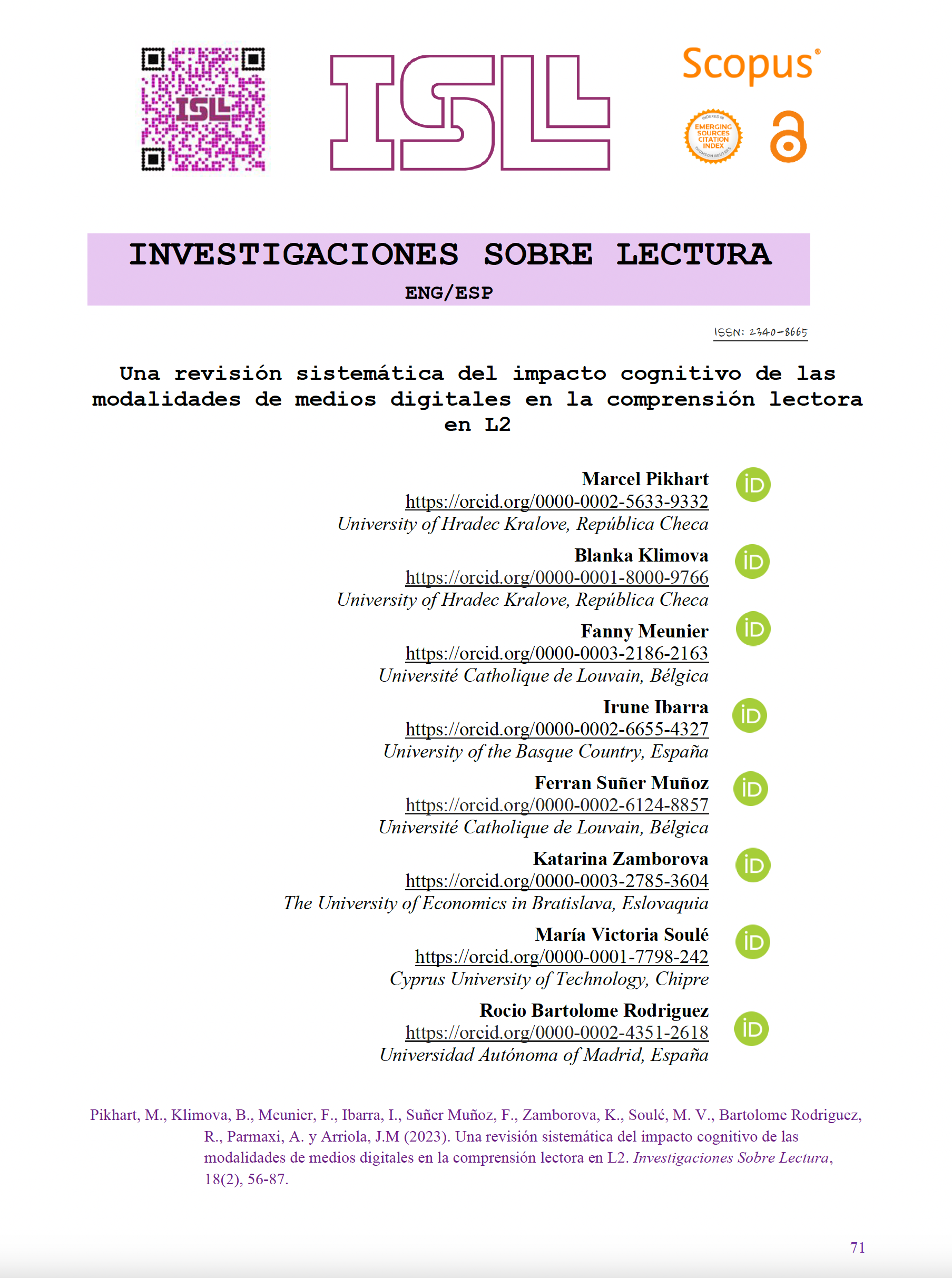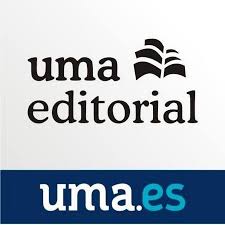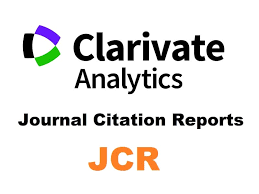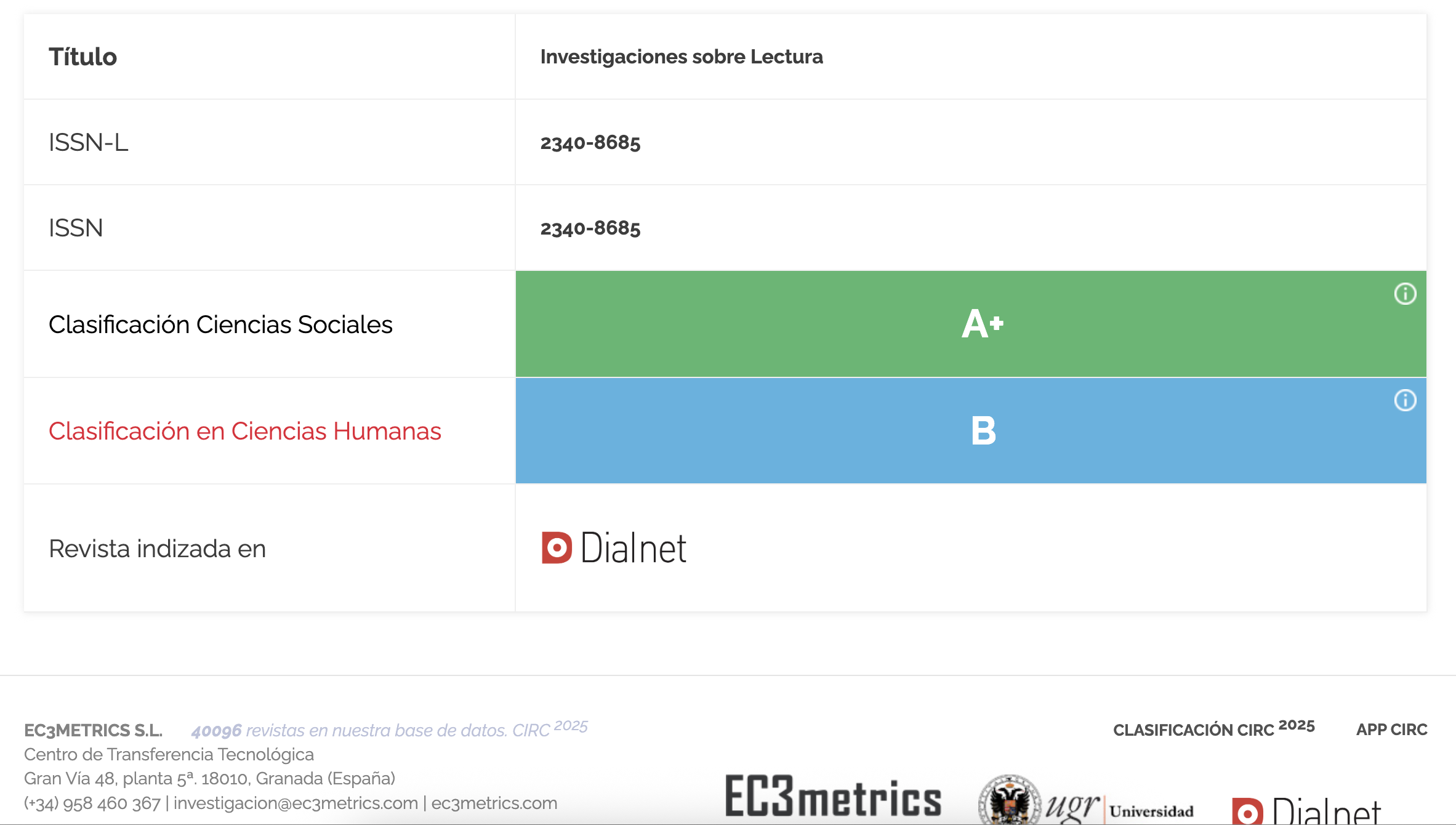Una revisión sistemática del impacto cognitivo de las modalidades de medios digitales en la comprensión lectora en L2
DOI:
https://doi.org/10.24310/isl.2.18.2023.16655Palabras clave:
second language acquisition, monolingual versus plurilingual, foreign languages, foreign language learning, applied linguistics, cognitive linguistics, psycholinguistics, ICT, technology, digital media, internet, social media, print mediaResumen
En la última década, las posibilidades que ofrecen hoy las TIC han aumentado drásticamente la exposición de los estudiantes a diversos textos digitales que utilizan o a los que están expuestos cuando adquieren una lengua extranjera. Los medios impresos se han visto complementados o incluso a veces sustituidos por los medios digitales en todos los niveles de la enseñanza, incluidos los planes de estudio de la enseñanza superior y universitaria. En los últimos tiempos se han llevado a cabo diversas investigaciones sobre el papel de los medios digitales en la adquisición de L2 y este artículo pretende resumir sistemáticamente los resultados de dichas investigaciones, centrándose específicamente en la comprensión lectora. Esta revisión sistemática sigue las directrices PRISMA (Page et al., 2021). Se han recopilado y analizado los estudios de 2010-2021 de Scopus y de Web of Science que tratan el tema. Sólo se han incluido en la búsqueda estudios experimentales en artículos de revistas de investigación revisados por pares. Aplicando este protocolo de revisión, se seleccionaron 15 trabajos para realizar una síntesis. Los resultados se clasificaron en: (a) efecto de los medios en la comprensión lectora, (b) implicaciones pedagógicas, (c) futuras direcciones de investigación. El estudio concluye con algunas discusiones e implicaciones para investigadores y profesionales desde dos perspectivas: la adquisición básica o fundamental de segundas lenguas (FSLA, en sus siglas en inglés) y la adquisición instruida de segundas lenguas (ISLA, en sus siglas inglés).
Descargas
Métricas
Citas
Ahmadi, D., y Reza, M. (2018). The use of technology in English language learning: A literature review. International Journal of Research in English Education, 3(2), 115-125.
Akbar, F. S., y Chen, C. A. (2015). Technology Assistance in Second Language Acquisition: Potentials and Limitations. Working Papers in Applied Linguistics and TESOL, 11(2), i-iii.
Al-shehri, S., y Gitsaki, Ch. (2010). Online reading: a preliminary study of the impact of integrated and split-attention formats on L2 students’ cognitive load. ReCALL, 22(3), 356-375.
Baron, N. (2015). Words Onscreen: The Fate of Reading in a Digital World. Oxford University Press.
Cain, K., y Oakhill, J. (Eds.). (2007). Children's comprehension problems in oral and written language: A cognitive perspective. The Guilford Press.
Cain, K., Oakhill, J., y Bryant, P. (2004). Children’s reading comprehension ability: Concurrent prediction by working memory, verbal ability, and component skills. Journal of educational psychology, 96(1), 31-42.
Chang, Y.H., Liu, T.C., y Paas, F. (2018). Cognitive resources allocation in computer-mediated dictionary assisted learning: From word meaning to inferential comprehension. Computers and Education, 127, 113-129.
Chang. M., y Lin, M. (2019). Experimental Study on Strategy-Oriented Web-Based English Instruction for EFL Students. Journal of Educational Computing Research, 56(8), 1238-1257.
Delgado, P., Vargas, C., Ackerman, R., y Salmerón, L. (2018). Don't throw away your printed books: A meta-analysis on the effects of reading media on reading comprehension. Educational Research Review, 25, 23-38.
Elgort, I., Brysbaert, M., Stevens, M., y Assche, E. (2018). Contextual word learning during reading in a second language. An eye-movement study. Studies in Second Language Acquisition, 40(2), 341-366.
Fajardo, I., Ávila, V., Ferrer, A., Tavares, G., Gómez, M., y Hernández, A. (2013). Easy-to-read Texts for Students with Intellectual Disability: Linguistic Factors Affecting Comprehension. Journal of Applied Research in Intellectual Disabilities, 27(3), 212-225. https://doi.org/10.1111/jar.12065
Fisher, D., Lapp, D., y Wood, K. (2011). Reading for details in online and printed text: A prerequisite for deep reading. Middle School Journal, 42(3), 58-63.
Furenes, M. I., Kucirkova, N., y Bus, A. G. (2021). A Comparison of Children’s Reading on Paper Versus Screen: A Meta-Analysis. Review of Educational Research, 91(4), 483–517. https://doi.org/10.3102/0034654321998074
Garrett-Rucks, P., Howles, L., y Lake, W. M. (2015). Enhancing L2 Reading Comprehension with Hypermedia Texts: Student Perceptions. CALICO Journal, 32(1), 26-51.
Greenfield, S. (2015). Mind Change: How Digital Technologies Are Leaving Their Mark on Our Brains. Random House.
Han, Z-H. (2016). A "reimagined SLA" or an expanded SLA? A rejoinder to the Douglas Fir Group (2016). The Modern Language Journal, 100(4), 736-740.
Hee, P., y Hyunwoo, K. (2017). Second language acquisition and processing of Korean locative constructions by Chinese speakers. Acta Koreana, 20(2), 591-614.
Kaban, A., y Karadeniz, S. (2021). Children’s Reading Comprehension and Motivation on Screen Versus on Paper. SAGE Open, 11(1). https://doi.org/10.1177/2158244020988849
Kazazoğlu, S. (2020). Is printed-text the best choice? A mixed-method case study on reading comprehension. Journal of Language and Linguistic Studies, 16(1), 458-473.
Kendeou, P., van den Broek, P., Helder, A., y Karlsson, J. (2014). A cognitive view of reading comprehension: Implications for reading difficulties. Learning disabilities research y practice, 29(1), 10-16.
Kuligowska, K, Kisielewicz, P., y Wlodarz, A. (2018). Speech synthesis systems: disadvantages and limitations. International Journal of Engineering y Technology, 7(2.28), 234-239.
Leu, D. J., Forzani, E., y Kennedy, C. (2015). Income inequality and the online reading gap: Teaching our way to success with online research and comprehension. Reading Teacher, 68(6), 422-427. https://doi.org/10.1002/trtr.1328
Leu, D. J., Forzani, E., Maykel, C., y Kulikowich, J. (2013). The new literacies of online research and comprehension: Assessing and preparing students for the 21st century with Common Core Standards. In S. B. Neuman and L. B. Gambrell (Eds.), Quality Reading Instruction in the Age of Common Core Standards (pp. 219-236). International Reading Association.
Leu, D. J., Kiili, C., y Forzani, E. (2016). Individual differences in the new literacies of online research and comprehension. In P. Afflerbach (Ed.), Handbook of Individual Differences in Reading: Reader, Text, and Context (pp. 259-272). Routledge.
Lim, J., Whitehead, G. E., y Choi, Y., (2021). Interactive e-book reading vs. paper-based reading: Comparing the effects of different mediums on middle school students’ reading comprehension, System, 97(4), 102434.
Linderholm, T., y van den Broek, P. (2002). The effects of reading purpose and working memory capacity on the processing of expository text. Journal of Educational Psychology, 94(4), 778-784.
Mayer, R. E. (2005). Cognitive theory of multimedia learning. In R.E. Mayer (Ed.), The Cambridge Handbook of Multimedia Learning. Cambridge University Press.
Marzban, A. (2011). Investigating the role of multimedia annotations in EFL reading comprehension. Procedia - Social and Behavioral Sciences, 28, 72-77.
Miyake, A., y Friedman, N. P. (2012). The Nature and Organization of Individual Differences in Executive Functions: Four General Conclusions. Current Directions in Psychological Science, 21(1), 8-14. https://doi.org/10.1177/0963721411429458
Mulder, E., van de Ven, M., Segers, E., Krepel, A., Bree, E., van der Mass, H., Jong, P., y Verhoeven, L. (2021). Serious game-based word-to-text integration intervention effects in English as a second language. Contemporary Educational Psychology, 65.
Nassaji, H. (2014). The role and importance of lower-level processes in second language reading. Language Teaching, 47(1), 1-37.
Nation, I. S. P. (2009). En Wei, Li y Cook, V. (eds.). New roles for L2 vocabulary. Contemporary applied linguistics, 1, 99-116.
Nomura, M., Nielsen, G. S., y Tronbacke, B. (2010). Guidelines for easy-to-read materials. IFLA.
OECD. (2011). PISA 2009 results: Students on line: Digital technologies and performance. (Volumen VI). http://dx.doi.org/10.1787/9789264112995-en.
Onieva, J. L., Maqueda, E., Felipe, A., y García, M. A. (2021). Estudio neurocientífico sobre el proceso de lectura en estudiantes de educación primaria con libros de texto en papel y digital. Investigaciones Sobre Lectura, 16, 1-31. https://doi.org/10.24310/isl.vi16.13683
Page, M. J., McKenzie, J. E., Bossuyt, P. M., Boutron, I., Hoffmann, T. C., Mulrow, C. D., et al. (2021). The PRISMA 2020 statement: an updated guideline for reporting systematic reviews. BMJ 372(71). https://doi.org/10.1136/bmj.n71
Pellicer-Sánchez, A. (2016). Incidental L2 Vocabulary Acquisition from and while Reading. An Eye-Tracking Study. Studies in Second Language Acquisition, 38(1), 97-130.
Perfetti, C. A., y Hart, L. (2002). The lexical quality hypothesis. In L. Vehoeven. C. Elbro, y P. Reitsma (Eds.), Precursors of functional literacy (pp. 189-213). John Benjamins.
Ratminingsih, N. M., y Budasi, I. G. (2020). Printed Media versus Digital Media: Which One is More Effective? In 3rd International Conference on Innovative Research Across Disciplines (ICIRAD 2019) (pp. 49-55). Atlantis Press.
Sadeghi, K. y Ahmadi, N. (2012). The effect of gloss type and mode on Iranian EFL learners’ reading comprehension. English Language Teaching, 5(12), 23-49.
Sadeghi, K., Khezrlou, S., y Modirkhameneh, S. (2017). Calling Iranian learners of L2 English: effect of gloss type on lexical retention and reading performance under different learning conditions. Journal of Research in Reading, 40(S1), 66-86.
Sánchez, S., y Pascual, M. A. (2022). Effectiveness of a Digital Serious Game in Improving Reading Comprehension and Academic Performance. Investigaciones Sobre Lectura, 1(17), 40-66. https://doi.org/10.24310/isl.vi17.14325
Sayers, D., Sousa-Silva, R., Höhn, S., et al. (2021). The Dawn of the Human-Machine Era: A forecast of new and emerging language technologies. Report for EU COST Action CA19102 ‘Language in The Human-Machine Era’. https://doi.org/10.17011/jyx/reports/20210518/1
Shang, H. F. (2015). An investigation of scaffolded reading on EFL hypertext comprehension. Australasian Journal of Educational Technology, 31(3), 293-312.
Small, G. W., Moody, T. D., Siddarth, P., y Bookheimer, S. Y. (2009). Your Brain on Google: Patterns of Cerebral Activation during Internet Searching. The American Journal of Geriatric Psychiatry, 17(2), 116-126.
Stodden, R. A., Roberts, K. D., Takahashi, K., Park, H. J., y Stodden, N. J. (2012). Use of Text-to-speech Software to Improve Reading Skills of High School Struggling Readers. Procedia Computer Science, 14, 359-362. https://doi.org/10.1016/J.PROCS.2012.10.041
Usó, E., y Ruiz-Madrid, M. N. (2009). Reading printed versus online texts. A study of EFL learners strategic reading behavior. International Journal of English Studies, 9(2), 59-79.
van den Broek, P., Risden, K., y Husebye-Hartmann, E. (1995). The role of readers’ standards for coherence in the generation of inferences during reading. En R. F. Lorch y E. J. O’Brien (Eds.), Sources of coherence in reading (pp. 353-374). Lawrence Erlbaum Associates Publishers.
Wang, Y. H. (2016). Reading strategy use and comprehension performance of more successful and less successful readers: A think-aloud study. Educational Sciences: Theory y Practice, 16(5), 1789-1813.
Westera, W. (2013). The Digital Turn. How the Internet Transforms Our Existence. Authorhouse.
Yow, W. Q. (2019). Computerised Electronic Features Direct Children’s Attention to Print in Single- and Dual-Language e-Books. AERA Open, 5(3), 1-15.
Zhang, R., y Zou, D. (2022). Types, purposes, and effectiveness of state-of-the-art technologies for second and foreign language learning. Computer Assisted Language Learning, 35(2), 1-47

Descargas
Publicado
Versiones
- 02-01-2024 (4)
- 22-12-2023 (3)
- 22-12-2023 (2)
- 22-12-2023 (1)
Cómo citar
Número
Sección
Licencia
Derechos de autor 2023 Marcel Pikhart, Blanka Klimova, Fanny Meunier, Irune Ibarra, Ferran Suñer Muñoz, Katarina Zamborova, María Victoria Soulé, Rocío Bartolomé Rodríguez, Antigoni Parmaxi

Esta obra está bajo una licencia internacional Creative Commons Atribución-NoComercial-CompartirIgual 4.0.
Todos los contenidos publicados en Investigaciones sobre Lectura están sujetos a la licencia Creative Commons Reconocimento-NoComercia-Compartirigual 4.0 cuyo texto completo puede consultar en <http://creativecommons.org/licenses/by-nc-sa/4.0>
Se pueden copiar, usar, difundir, transmitir y exponer públicamente, siempre que:
- Se cite la autoría y la fuente original de su publicación (revista, editorial y URL de la obra).
- No se usen para fines comerciales.
- Se mencione la existencia y especificaciones de esta licencia de uso.
Los derechos de autor son de dos clases: morales y patrimoniales. Los derechos morales son prerrogativas perpetuas, irrenunciables, intransferibles, inalienables, inembargables e imprescriptibles. De acuerdo con la legislación de derechos de autor, Investigaciones sobre Lectura reconoce y respeta el derecho moral de los/las autores/as, así como la titularidad del derecho patrimonial, el cual será cedido a la Universidad de Málaga para su difusión en acceso abierto. Los derechos patrimoniales, se refieren a los beneficios que se obtienen por el uso o divulgación de las obras. Investigaciones sobre la Lectura se publica en open access y queda autorizada en exclusiva para realizar u autorizar por cualquier medio el uso, distribución, divulgación, reproducción, adaptación, traducción o transformación de la obra.
Es responsabilidad de los/las autores/as obtener los permisos necesarios de las imágenes que están sujetas a derechos de autor.




















30.png)




